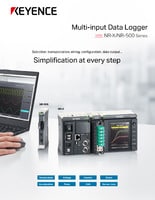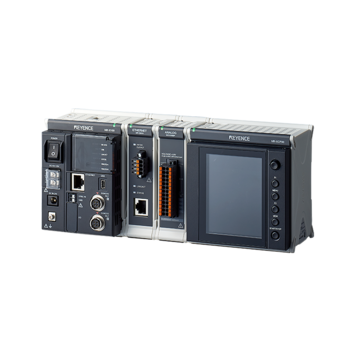Data Acquisition (DAQ)
Voltage Measurement for Plastic and Metal Industry
Voltage measurement for plastic and metal industries, for example plays a crucial role in numerous manufacturing processes. Voltage can be used to measure different physical properties of a particular object, including displacement measurements. Displacement senors or meter often times convert the diplacement into voltage. This voltage can be interpreted in several ways. In this section, we’ll cover voltage measurement in plastic and metal industries.
Displacement Measurement During Plastic Tension Testing
Displacement measurement during plastic tension testing is an important aspect of evaluating the mechanical properties of this material, which involves applying a uniaxial force to a tested object until it deforms or breaks entirely.
The displacement measurement, which is, in this case, the change in length and or thickness of the test object, will change under load, providing essential data on the stress behavior of plastic materials. This includes important mechanical properties, such as elasticity, yield strength, ultimate tensile strength, and elongation at break, all of which are crucial for quality control and compliance.
We’re here to provide you with more details.
Reach out today!

Displacement Measurement During Tension Test on Metals
Just like with plastic materials, displacement measurement during tension tests on metals is crucial for material characterization, as it provides insight into the mechanical properties of the material. However, unlike plastics, metals exhibit different behaviors under tensile stress, including elastic deformation, yielding, strain hardening, and ultimately fracture.
The precise displacement measurements are crucial here as they yield valuable insights into material properties and their behavior under stress. Just like with plastic tension testing, displacement measurement can be captured by the non-contact sensors or sensors physically measuring displacement.
Discover more about this product.
Click here to book your demo.

Voltage Measurement Data Loggers for Plastic and Metal Industries
Displacement of materials during tension testing doesn’t rely on voltage measurement directly. The displacement alone, the mechanical change in the material’s structure, typically involves mechanical or optical measurement methods, such as extensometers or lasers.
Some sensors, like the KEYENCE IG-Series, rely on laser-based CCD micrometers, which convert the linear motion of an object into an electrical signal—either voltage or current.
In either case, the signal is transmitted to a Data Acquisition System (DAQ) or Data Loggers equipped with a signal processing and conditioning unit, such as the NR-HA08/08P or NR-HV04, which along woith the NR-X Series, converts the signal to a useful measurement for further processing and storage.
KEYENCE’s NR-X Series is the world’s most compact portable multi-input data logger with up to 576 channels provided by eight different measurement units. The device is powered by both DC and AC power supply units, backed by a high-capacity lithium-ion battery capable of up to 800 minutes (approximately 13 hours) of data collection.
Get detailed information on our products by downloading our catalog.
View Catalog

Integrating Voltage Measurement into Plastic and Metal Tension Testing
Integrating voltage measurement into tension testing in both the plastic and metal industries enhances the precision, efficiency, and data insight provided by these tests. Depending on the type of sensor you choose, the integration involves transducing a mechanical property into an electrical signal—mainly analog voltage or current (4 to 20 mA).
KEYENCE offers a comprehensive range of sensors and processing units for its NR-X Series Data Acquisition System, which is the most compact in its class.
Contact us if you have further inquiries regarding integration with your pre-existing manufacturing and quality control processes.
Curious about our pricing?
Click here to find out more.



